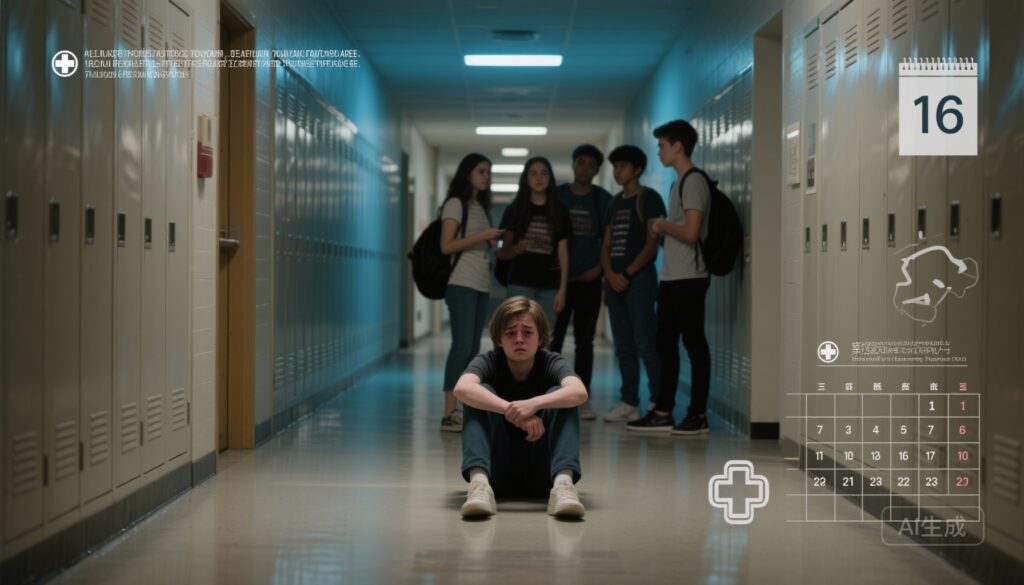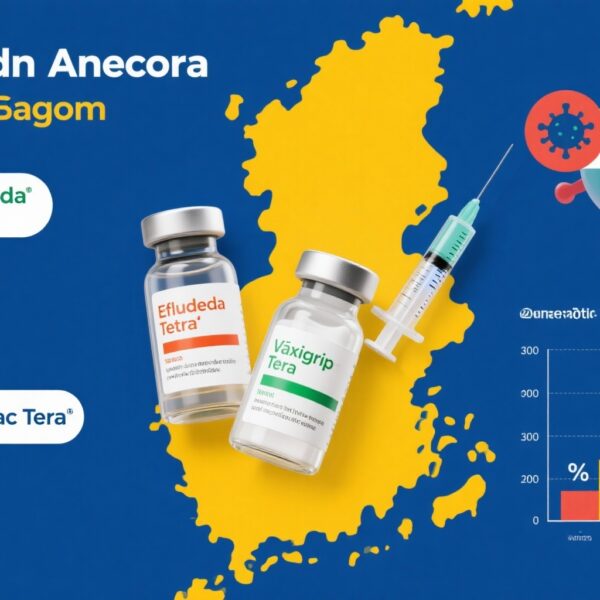Highlights
– Nationwide Finnish registry study (n=913,149) linked same-grade schoolmates’ self-harm exposure to a small overall increase in subsequent self-harm (HR 1.05; 95% CI 1.01–1.09).
– The association was temporally concentrated: highest relative risk around age 16 (HR ≈1.45), and strongest when exposure was limited to the prior year.
– Findings are consistent with social transmission models (peer influence, emotional contagion, modeling) but are subject to residual confounding and measurement limitations.
Background
Self-harm among adolescents is a major clinical and public health concern. Episodes of non-fatal self-harm are common in mid-adolescence and are strong markers of future suicide risk, psychiatric morbidity, and health service use. Observational and clinical reports have long suggested that self-harm can cluster in time and place, and that exposure to peers’ suicidal or self-injurious behaviors may increase risk through social, emotional, or normative mechanisms. Robust, population-level data testing whether self-harm clusters within adolescent peer networks and how that risk varies over time have been limited.
Study design
Alho et al. used comprehensive, nationwide Finnish registry data to create a birth-cohort of individuals born between 1985 and 2000 (n=913,149). Cohort members were assigned to same-grade schoolmate groups and followed from school completion through first recorded self-harm episode, emigration, death, or study end (Dec 31, 2020).
Exposure was defined as the presence of same-grade schoolmates with recorded self-harm episodes that occurred between school start and the end of ninth grade; sensitivity analyses limited exposure to schoolmates’ self-harm occurring within the prior year. Outcomes were first recorded episodes of self-harm identified in administrative health registries. Mixed-effects Cox proportional hazards models accounted for clustering and adjusted for extensive covariates at the individual, parental, school, and area levels.
Key findings
Main result: Across a median follow-up of 11.6 years, having same-grade schoolmates who had self-harmed was associated with a modest but statistically significant increased hazard of later self-harm (adjusted HR 1.05; 95% CI 1.01–1.09).
Temporal pattern: The association was not uniform across follow-up. The highest hazard was observed in the early phase of follow-up — corresponding to cohort members around age 16 — where the relative risk was markedly higher (HR 1.45; 95% CI 1.25–1.69). This suggests a time-limited elevation in vulnerability following exposure to peer self-harm.
Sensitivity analyses: When exposure definitions were restricted to schoolmates’ self-harm occurring within the prior year, the peak risk around age 16 remained and in some analyses was augmented (e.g., exposure in ninth grade with follow-up starting after that grade: HR 1.49; 95% CI 1.21–1.82). A similar but slightly attenuated peak was seen when exposure occurred in eighth grade (HR 1.36; 95% CI 1.07–1.74).
Interpretation of effect size: Although the overall association across the entire follow-up was small, the concentrated elevation in hazard at a developmental stage around 16 years old is clinically meaningful. The temporally proximal increases are consistent with rapid social influence or emotional transmission processes and suggest that interventions immediately after peer self-harm episodes may be especially important.
Context and comparison with prior evidence
These population-level findings complement previous smaller observational and qualitative studies describing clusters of youth self-harm and the risk associated with exposure to suicide or self-harm in peers and in media. Previous literature on suicide contagion and social contagion mechanisms has emphasized rapid, local increases in risk after exposure and the role of modeling and normalization; the current study adds robust, registry-based evidence at national scale and quantifies the temporal dynamics in a large cohort.
Mechanisms and plausibility
Several mechanisms may account for the observed clustering and time-limited elevation in risk:
- Modeling and social learning: Adolescents may perceive self-harm as an available coping strategy if they observe it in peers.
- Emotional contagion and social reinforcement: Close peer groups can amplify distress and maladaptive coping responses.
- Selection and homophily: Adolescents with shared vulnerabilities may cluster together, creating apparent transmission that partly reflects pre-existing risk.
- Shared environmental stressors: Disruptive events (school transitions, examinations, relationship problems) around mid-adolescence may jointly elevate risk for group members.
The stronger associations for exposures occurring within one year and the marked peak around age 16 support short-latency social influence and contextual stressors as important contributors, though disentangling selection from influence remains difficult in observational data.
Strengths
- Large, nationwide, population-based cohort with long follow-up and near-complete linkage reduces selection bias and enhances generalizability within Finland.
- Use of registry-recorded self-harm reduces recall bias and provides objective timestamps for both exposures and outcomes.
- Comprehensive adjustment for individual-, parental-, school-, and area-level covariates and use of mixed-effects models to account for clustering improves causal inference.
Limitations
- Outcome ascertainment relied on recorded self-harm episodes in health registries; episodes not presenting to healthcare (common in adolescents) were not captured, potentially underestimating absolute incidence and misclassifying exposure–outcome links.
- Exposure metric (same-grade schoolmates) is an imperfect proxy for close friendship or social influence; not all same-grade peers are socially connected, and important influences outside school (online contacts) are unmeasured.
- Residual confounding by unmeasured individual vulnerabilities (e.g., undiagnosed psychiatric disorders, family dynamics) or peer selection effects cannot be fully excluded despite extensive covariate adjustment.
- Generalisability to settings with different school systems, cultural norms, or healthcare-seeking behaviours may be limited.
Clinical and public health implications
Although the overall increased hazard across long-term follow-up was modest, the clear temporal concentration of risk around age 16 and within one year of peers’ self-harm has actionable implications:
- Postvention: Rapid, school-level responses (postvention) after a student’s self-harm episode should be prioritized. Interventions can include outreach to at-risk peers, targeted counselling, and clear information on how to seek help.
- Gatekeeper training: Training teachers, school staff, and peers to recognise warning signs and facilitate timely mental health referrals may help interrupt social transmission during high-risk windows.
- Screening and support during transitions: Additional psychosocial support around school transitions and other mid-adolescence stressors (age 15–17) could mitigate vulnerability when peer influences are most impactful.
- Responsible communication: Health services and media should follow best-practice guidance to reduce contagion risk when reporting self-harm incidents.
Research implications and next steps
Future work should aim to refine measurement of social connections (e.g., using friendship networks, social media ties), incorporate community-detected self-harm episodes (not only those presenting to health services), and apply causal inference methods that better separate selection from influence (e.g., longitudinal social network analyses, natural experiments). Randomized or quasi-experimental evaluations of school-based postvention and targeted early interventions timed to high-risk windows would help determine effective strategies to reduce contagion and overall incidence.
Expert commentary
These findings align with established theories of social contagion but importantly quantify the effect at national scale and highlight a developmentally specific window of increased susceptibility. Clinicians and school-based practitioners should regard exposure to peer self-harm not only as a psychosocial event but as a potential proximal risk factor for others in the same network—especially in the months following an incident. Policies that enable rapid, evidence-based postvention and accessible mental health services for adolescents could plausibly reduce secondary cases.
Conclusion
Alho and colleagues provide compelling, registry-based evidence that adolescent self-harm exhibits modest clustering within same-grade peer networks at the population level, with a pronounced short-term elevation in risk around age 16. While residual confounding and measurement constraints temper causal claims, the temporal concentration of risk supports the need for timely, school-targeted prevention and postvention strategies during mid-adolescence. Better mapping of actual friendship ties and inclusion of non–healthcare-attended self-harm in future studies will refine understanding and inform targeted interventions.
Funding and trial registration
The study was funded by the European Research Council and the Research Council of Finland. There is no clinicaltrials.gov registration for this registry cohort analysis.
References
1. Alho J, Webb RT, Gutvilig M, Niemi R, Komulainen K, Suokas K, Böckerman P, Elovainio M, Kapur N, Hakulinen C. Examination of self-harm clustering in adolescent peer networks: a nationwide registry cohort study in Finland. Lancet Reg Health Eur. 2025 Nov 2;60:101517. doi: 10.1016/j.lanepe.2025.101517. PMID: 41255776; PMCID: PMC12621558.
2. Hawton K, Saunders KEA, O’Connor RC. Self-harm and suicide in adolescents. Lancet. 2012;379(9834):2373–2382. doi:10.1016/S0140-6736(12)60322-5.
3. Gould MS, Jamieson P, Romer D. Media contagion and suicide among the young. Am Behav Sci. 2003;46(9):1269–1284. doi:10.1177/0002764203046009002.
4. World Health Organization. Preventing suicide: A global imperative. Geneva: WHO; 2014.



